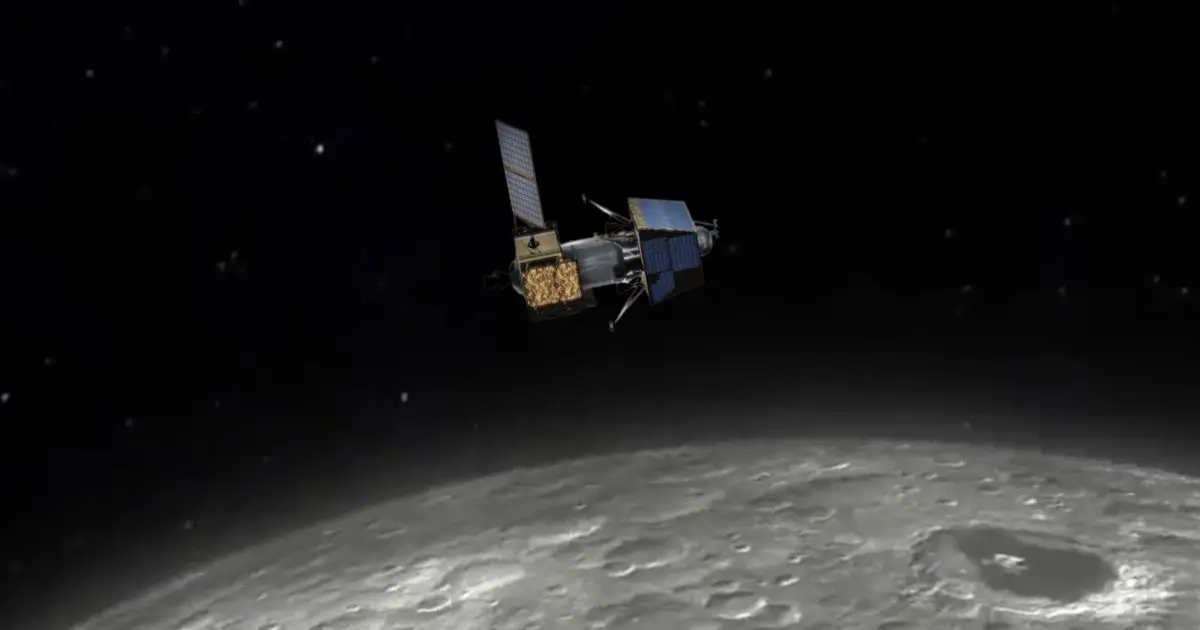India’s journey into space exploration reached new heights with the Chandrayaan 2 mission, the nation’s second lunar expedition following the success of Chandrayaan 1. This ambitious endeavor, launched on July 22, 2019, aimed to unravel the moon’s mysteries, delve into its geological history, and contribute crucial data to global scientific knowledge.
From the vast expanse of space, Chandrayaan 2 ventured into the unexplored territory of the moon’s South Polar region, igniting hope and excitement across the nation and the world.
Page Index
Mission Details
Key details of the Chandrayaan 2 mission:
| Chandrayaan 2 Mission | Details |
|---|---|
| Launch Date | July 22, 2019 |
| Launch Vehicle | GSLV Mk III-M1 |
| Mission Objectives | – Mapping lunar composition – Probing for lunar water – Technological achievement |
| Targeted Area | Moon’s South Polar region |
| Components | – Lunar Orbiter – Vikram Lander – Pragyan Rover |
| Scientific Payloads | 14, including instruments for surface analysis, water detection, and solar observations |
| Orbiter Instruments | 8 instruments for surface, sub-surface, and exosphere studies |
| Vikram Lander | – Named after Dr. Vikram Sarabhai – Equipped with scientific instruments |
| Pragyan Rover | Intended for surface analysis (not deployed due to landing failure) |
| Achievements | – Confirmation of lunar water – Detection of minor elements and lunar composition – Solar observations |
| Future Implications | Data contributes to upcoming lunar exploration missions by JAXA, NASA, and China |
| Setbacks | Vikram lander’s crash-landing on the moon’s surface |
| Legacy | Inspires future generations of scientists and space explorers |
| Continuing Mission | Orbiter continues to study the moon’s surface, exosphere, and more |
| Global Collaboration | Contributes to international efforts for lunar exploration and understanding |
| Lessons Learned | Setbacks provide valuable insights for refining future space exploration technologies |
Objective
Chandrayaan 2 emerged as a continuation of the groundbreaking discoveries and insights garnered from its predecessor, Chandrayaan 1. However, this time, the mission’s primary focus was directed towards the South Polar region of the moon, an area that had never been explored before. The lunar mission set forth with the following key objectives:
- Mapping Lunar Composition: The mission aimed to meticulously map the moon’s surface and study variations in its composition. By analyzing the moon’s makeup, scientists hoped to uncover invaluable information about its origin and evolution, ultimately shedding light on the mysteries of its past.
- Probing for Lunar Water: One of the most significant objectives was to ascertain the presence and distribution of water on the lunar surface, especially within the craters and regions that remained perpetually shadowed. The mission sought to understand the moon’s unique geological features and their potential implications for the presence of water.
- Technological Feat: Chandrayaan 2 pushed the boundaries of space exploration by attempting to make a soft landing on the moon’s surface in the challenging South Polar region. This was a remarkable endeavor as no other country had ventured into this territory before.
Components and Modules
Chandrayaan 2 comprised three essential modules, each playing a distinct role in unraveling lunar mysteries:
- Lunar Orbiter: The orbiter was tasked with observing the moon from an orbit about 100 kilometers above its surface. Armed with eight scientific instruments, the orbiter aimed to gather data on the moon’s surface, sub-surface, and exosphere, enabling detailed analysis of its composition and characteristics.
- Vikram Lander: Named after Dr. Vikram Sarabhai, the visionary behind India’s space program, the Vikram lander held the monumental task of making a soft landing on the moon’s surface. Equipped with scientific instruments, the lander aimed to provide crucial insights into the moon’s terrain, composition, and mineralogy.
- Pragyan Rover: Intended to traverse the moon’s surface, the Pragyan rover was designed to analyze and study the lunar soil and rocks. Unfortunately, due to the unsuccessful landing, the rover could not fulfill its intended mission.
Achievements and Discoveries
While the Vikram lander’s crash-landing was a setback, the Chandrayaan 2 mission achieved remarkable milestones and yielded valuable insights that continue to shape our understanding of the moon. Some of the most significant discoveries include:
- Water’s Presence: Chandrayaan 2 confirmed the presence of water on the moon’s surface. The mission’s advanced instruments, such as the Imaging Infra-Red Spectrometer (IIRS), accurately distinguished between hydroxyl and water molecules, providing precise information about the distribution and abundance of water across the moon.
- Lunar Composition: The Large Area Soft X-ray Spectrometer (CLASS) played a pivotal role in detecting minor elements such as chromium and manganese on the moon’s surface. This finding has implications for understanding the moon’s geological evolution and planetary differentiation.
- Solar Insights: The Solar X-ray Monitor (XSM) not only studied the moon but also collected data on solar flares. By observing microflares outside active regions, the XSM contributed to our understanding of the mechanism behind the solar corona’s heating.
Lessons from Setbacks
While the Vikram lander’s crash-landing was undoubtedly disappointing, the mission’s overall impact remains substantial. The Chandrayaan 2 mission has contributed significantly to our understanding of the moon’s composition, water distribution, and solar interactions.
Moreover, the mission’s setbacks serve as valuable lessons, pushing scientists and engineers to refine technologies and approaches for future space exploration endeavors.
In conclusion, Chandrayaan 2’s journey exemplifies India’s commitment to advancing space exploration and contributing to global scientific knowledge. Despite challenges and setbacks, the mission’s achievements underscore the nation’s prowess in space technology and its determination to uncover the moon’s secrets.
As humanity continues to explore the cosmos, Chandrayaan 2’s legacy will endure, inspiring future generations of scientists and space explorers to venture into the unknown and unlock the mysteries of the universe.


